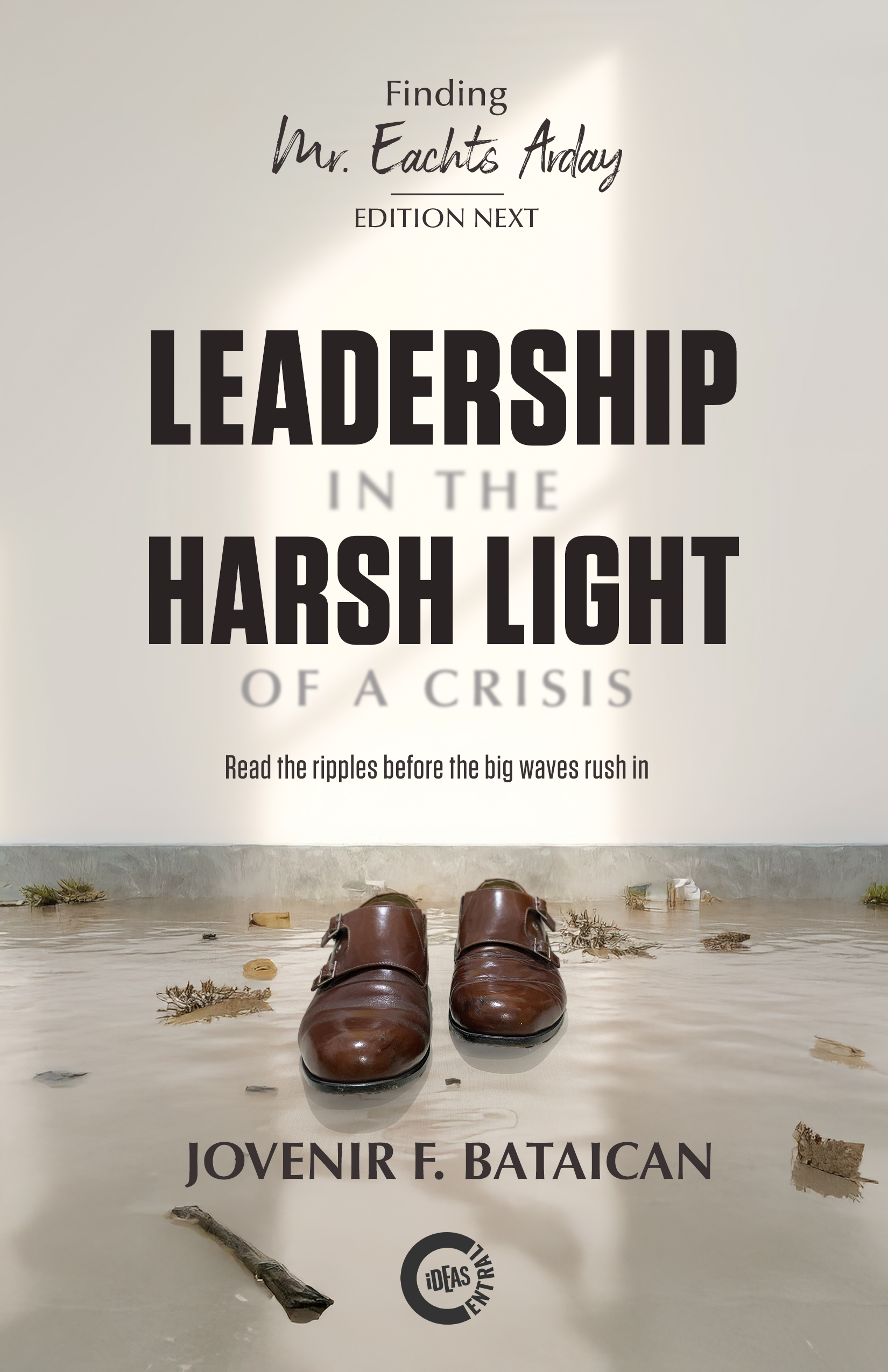BOOK EXCERPT:
LEADERSHIP IN THE HARSH LIGHT OF A CRISIS
1. Is a company’s continued growth and business success a sign that its
leadership is crisis-adept and its people a reflection of how well they are
being managed?
– Not exactly. You’ll be surprised to know that some of the biggest companies in the country, especially family owned and managed through generations, are thriving not because they’re managing their people well and that they are crisis-ready, it’s because they have other factors going for them. In a highly retail-driven economy, companies that offer very competitive prices and a good variety of options, can and will survive the times. From the consumers’ perspectives, expectations need to be adjusted in terms of the quality of customer care or the products themselves, but patronage can continue through the years.
A number of these companies are willing to cut profit goals in favor of sustaining increases in volume and market share. Resources that should be earmarked for people management are likewise reduced to the bare minimum, sacrificing compensation, benefits, and developmental programs to keep the business viable.
2. Can leaders and their people thrive in a crisis-riddled organization?
– Yes, but not in a sustainable way. People who operate in an organization that is constantly on survival mode tend to show higher stress levels that ultimately impact their health, the quality of their lives, and their responses to multiple crisis. Management usually retains their top people by taking extra care of them but down the hierarchy, turnovers are expectedly high. By maintaining a small cadre of loyal lieutenants, the company projects an image of stability, although the real score is much grimmer than what is readily seen. Battle-scarred officers are either too hardened to the point of indifference, or they are too tired to care for others.
Balance and the ability to prepare the entire team for any crisis spreads the pressure around and allows rotations that equip people with flexibility, core skills and adaptability.
3. Is there such a thing as a necessary crisis?
– In hindsight, maybe. This is more of an appreciation of the outcome of a crisis. One that results in a better organization, a realization of the opportunities that present themselves post crisis, and the harvest of learning that can further strengthen the capabilities of an organization. For as long as the crisis was not intentional or the result of complacency or neglect, a successful navigation and an appreciable outcome are worthy of acknowledging. Internal processes are likewise tested to see if these can withstand threats, like in the cases of the global pandemic and natural calamities that usually occur without warning.


